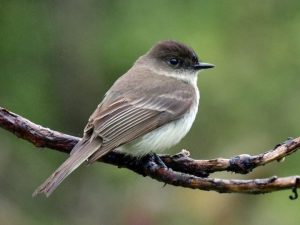
Every year, Eastern Phoebes nest in our front porch.
When we first moved into this house in 1995, the phoebes weren’t very successful. They built nests on unsustainable perches: in a hanging basket buffeted by the wind one year, drowned by water coming off the eaves another.
One year, they attached their nest on top of the porch light, and their babies fell out. A blind, dead, featherless chick is a sad, sad way to be greeted at the front door.
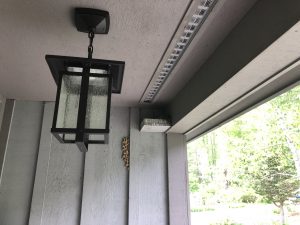
We thought the adults would eventually figure out better homebuilding techniques and breed a successful family. But after four or five years, our patience for their slow learning curve finally ran out, and we intervened. We built the phoebes a sturdy, sheltered nesting shelf, and they’ve been breeding successfully ever since.
The front door is on the north side of the house. Snow slides off the garage roof, burying the front walkway, which we don’t bother to shovel. Instead we enter through the woodshed to the back door and into the mud room. But the phoebes arrive within weeks of the snow melting, preventing us from using the front door for a few weeks more. Once the birds take up residence, we try not to disturb them, meaning we continue to use the back door most of the time.
When someone does approach from the front path, whichever bird is minding the nest flits out and twitches its tail from the nearby shrubbery, rasping its phoebe, phoebe, phoebe until the intruder takes the hint and departs.
Regardless of what the phoebes think of me, I consider them my neighbors, and I keep my eye out for them and their offspring.
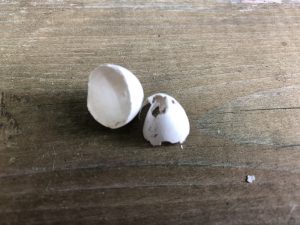
The other day, I found a hatched shell below the nest and noticed the parents are suddenly more active, fetching insects for their young flycatchers.
It usually takes a week before I can catch a glimpse of the babies; when I do, what first comes into view are the chicks’ giant beaks, entirely out of proportion with the rest of their meagerly feathered, tiny bodies.
But it doesn’t take long for them to grow, and before long, they’re hanging off the edge of the shelf where their nest rests, spattering their guano down below. Shortly after that, they fledge – gone till next year.
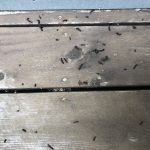
The phoebes are not the only animals living rent-free in our home. We also have bats residing in a bat house installed high up on the south face of the building. Again, it’s their guano – similar to mouse dung – that lets us know they’re in residence.
Cleaning up after the bats is a small price for the service they provide eating insects. Most of the time, we can sit outside without the mosquitos, gnats or black flies bothering us. When they do, we retreat onto the screened porch.
The animals I don’t like providing shelter to are the mice, because they cause so much damage to the textiles in the attic, the dry goods in the basement, and the cabin air filter of my car in the garage. My two cats, however, have awakened from their decorative winter slumber and now spend their nights outside. Most mornings, they leave the entrails of small rodents by the back door. Good kitties.
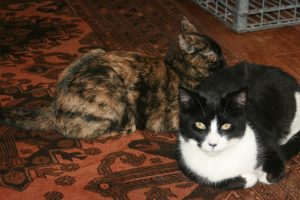
Living in Place is a blog about living a rural and rooted life in southeastern Vermont. By subscribing, you will receive an essay every Wednesday day at no cost to you and great satisfaction to me. Thanks.
Hi Deb.
This year is the first time my phoebes have not come to nest, after more than twenty years of raising their families under my porch eave. They arrived early this spring, called and flitted about, then disappeared. It’s a mystery to me why they left–did a cold snap prevent the insects from hatching that was their food source? Or did they find more hospitable lodgings. Either way, I miss their activity, energy and the front row seat I had watching the broods grow and finally fly off. Maybe next year….
Hi Mary, Sorry to hear about your phoebes. I can imagine how much you miss them. They’re a kind of house alarm every time I walk in and out. . . I do hope a new breeding pair find your porch next spring. Always nice to hear from you ~Deb.
A reader emailed me this link to learning more about finding and observing birds in their nests. https://celebrateurbanbirds.org/community/challenges/funky-nests-2018/
There’s a contest for nests in unusual places, with some pretty good prizes – worth checking out!